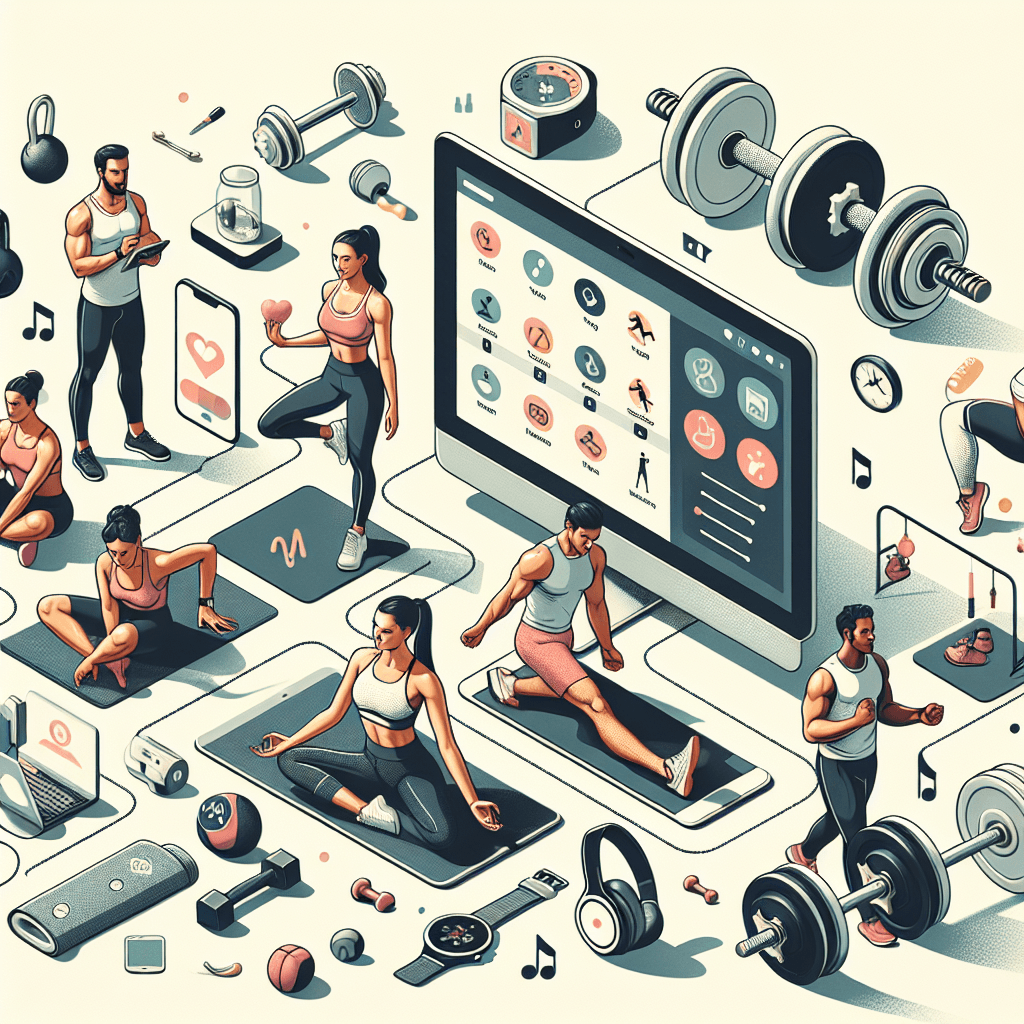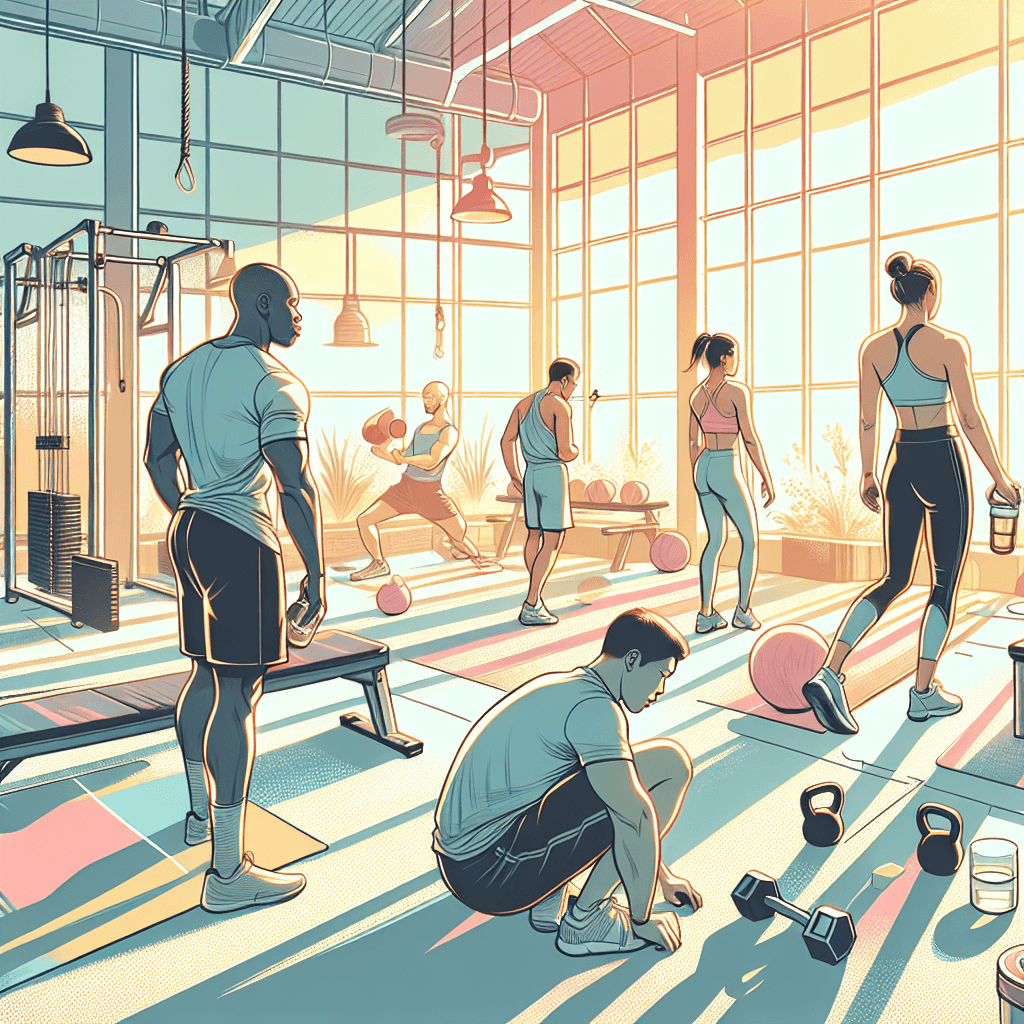Aging Gracefully: Fitness Tips for the 50+ Crowd

As we age, our bodies naturally undergo a series of changes, making maintaining our physical health more important than ever. For individuals aged 50 and above, staying fit not only improves overall well-being but also reduces the risk of various health issues. In this article, we will discuss the significance of fitness for the 50+ crowd, explore the numerous benefits of regular exercise for this demographic, and provide tailored workout recommendations to help you age gracefully and enjoy a higher quality of life.
The Importance of Fitness for Older Adults
Incorporating regular exercise into your daily routine can work wonders for your health, especially as you enter your golden years. Some key benefits of staying active for individuals aged 50 and above include:
- Improved Cardiovascular Health: Engaging in regular physical activity helps strengthen the heart and improves blood circulation. This can reduce the risk of heart disease, high blood pressure, and stroke, which are leading causes of death among older adults.
- Increased Bone Density: Weight-bearing exercises, such as walking, jogging, or resistance training, can help maintain or even increase bone density. This is crucial for preventing osteoporosis and reducing the risk of fractures as we age.
- Enhanced Mental Well-being: Physical activity has been shown to boost mood, reduce stress, and help combat anxiety and depression. Staying active also improves cognitive function, which can help protect against age-related memory decline, dementia, and Alzheimer's disease.
- Better Sleep Quality: Regular exercise can help improve sleep quality and duration, allowing you to feel more refreshed and alert during the day. Poor sleep quality is a common issue among older adults, and addressing it through exercise can lead to a healthier, more satisfying life.
- Increased Mobility and Functional Independence: Staying active helps preserve muscle strength and flexibility, which are essential for maintaining mobility and independence. A regular exercise routine can also reduce the risk of falls, a leading cause of injury among older adults.
Workout Tips and Recommendations for the 50+ Crowd
When designing a fitness routine for older adults, it's essential to consider their unique needs and challenges. Here are some workout tips and recommendations tailored to the 50+ demographic:
- Consult Your Physician: Before starting any exercise program, it's crucial to consult your doctor to ensure it's safe for your current health condition. They can offer specific advice and precautions based on your medical history, fitness level, and potential limitations.
- Start Slowly and Gradually: If you're new to exercise or haven't been active for a while, it's essential to start slowly and gradually increase your activity level. Begin with low-impact exercises and gradually increase the duration, frequency, and intensity as you become more comfortable.
- Prioritize Balance and Flexibility: As we age, our balance and flexibility can decline, increasing the risk of falls and injuries. Incorporate balance exercises, such as standing on one leg, tai chi, or yoga, and stretching routines to maintain or improve flexibility.
- Strength Training: Building muscle mass is crucial for older adults, as it helps combat age-related muscle loss and maintains functional independence. Aim for two to three sessions of strength training per week, targeting all major muscle groups. Be sure to include exercises for the upper body, lower body, and core muscles.
- Choose Low-Impact Aerobic Activities: Low-impact aerobic exercises, such as swimming, brisk walking, or cycling, are ideal for older adults, as they minimize joint stress while still providing cardiovascular benefits. Aim for at least 150 minutes of moderate-intensity aerobic activity per week or 75 minutes of vigorous-intensity activity, spread across several days.
- Listen to Your Body: Pay attention to your body's signals and adjust your workout routine accordingly. If something doesn't feel right or you experience pain, stop the exercise and consult your physician. It's essential to allow your body adequate time to recover and avoid overexertion.
- Stay Consistent and Enjoyable: Consistency is key to reaping the benefits of exercise. Choose activities that you enjoy and are likely to stick with long-term. Consider joining a class, or walking group, or enlisting a workout buddy to help stay motivated and accountable.
- Stay Hydrated: As you age, your sense of thirst might diminish, increasing the risk of dehydration. Make sure to drink water before, during, and after your workouts to ensure you stay properly hydrated.
- Pay Attention to Nutrition: Eating a well-balanced diet is essential for fueling your workouts and promoting recovery. Focus on consuming nutrient-dense foods, including lean proteins, whole grains, fruits, vegetables, and healthy fats. Older adults may also benefit from vitamin and mineral supplements, but it's essential to consult your doctor before taking any new supplements. Try to avoid junk food.
- Set Realistic Goals: Establishing realistic and achievable fitness goals can help keep you motivated and track your progress. Break your long-term goals into smaller, short-term milestones, and celebrate your accomplishments along the way.
- Warm-up and Cool-down: Always include a proper warm-up and cool-down routine before and after your workouts. Warming up helps to increase blood flow, loosen up muscles, and reduce the risk of injury. Cooling down helps bring your heart rate back to normal and aids in recovery.
- Be Patient and Persistent: It's important to remember that progress takes time. Be patient and persistent, and don't be discouraged by setbacks. Celebrate your small victories and keep working towards your goals.
In conclusion, staying active and maintaining a well-rounded fitness routine is vital for aging gracefully and enjoying a higher quality of life. With proper planning, guidance, and consistency, older adults can reap the numerous benefits of regular exercise and achieve improved overall health and well-being. By adopting these fitness tips and recommendations, you can create a sustainable and effective exercise routine that will support your health and vitality well into your golden years.





